by W.S. Cranshaw* (1/19)
Quick Facts…
- Potato/tomato psyllid is the most damaging insect to potatoes and tomatoes in Colorado.
- Damage is caused by toxic saliva introduced when the insect feeds. This can produce a serious disease known as “psyllid yellows”.
- Potato/tomato psyllid does not survive outdoors in Colorado through winter. New infestations occur annually from migrations that originate in Texas and northern Mexico.
- Early detection and treatment of potato/tomato psyllid is important to prevent damage.
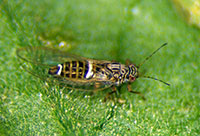
Figure 1: Adult potato/tomato psyllid. |
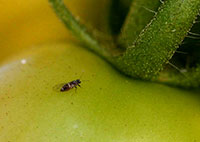
Figure 2: Psyllid adult on tomato fruit. |
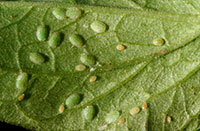
Figure 3: Potato/tomato psyllid nymphs in various stages on the underside of a tomato leaf. |

Figure 4: Psyllid sugar excrement collected on a leaf under a group of feeding psyllid nymphs. |
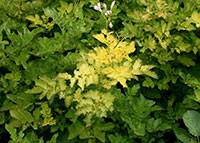
Figure 5: Bright yellowing of potato leaves in response to psyllid yellows, a disease that develops in response to the toxic saliva of the potato/tomato psyllid. |
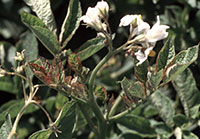
Figure 6: Purpling and slight leaf curling symptom associated with psyllid yellows on some plants. |
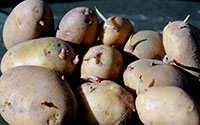
Figure 7: Premature sprouting is a common effect of potatoes grown from plants damaged by psyllid yellows. |
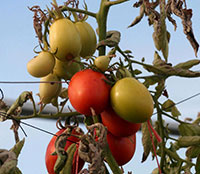
Figure 8: Tomato fruit is dull colored and less flavorful if damaged by psyllid yellows. |

Figure 9: Damsel bug, a predator of tomato/potato psyllid. |
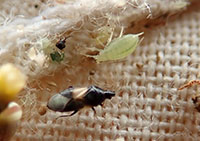
Figure 10: Adult minute pirate bug underneath an aphid, collected during sweep net sampling. Minute pirate bug is often the most important predator of potato tomato psyllid. |

Figure 11: Nymph of a minute pirate bug, feeding on a young aphid. |
The potato/tomato psyllid (Bactericera cockerelli) is the most damaging insect pest of both tomatoes and potatoes grown in Colorado. Injuries are produced from the effects of saliva introduced as the insect feeds, causing a range of symptoms that are often described as “psyllid yellows”.
Outbreaks of potato/tomato psyllid are irregular in occurrence. The insect is an annual migrant into the state, spending winter in areas of southern Texas and northern Mexico, and the number of insects settling in the state varies from year to year. Indoors, on greenhouse tomatoes, potato/tomato psyllid can occur year-round.
Problems historically have been greatest in northeastern Colorado, where serious damage in some locations occurs in about half of the years. Problems are less frequent in southeastern Colorado, because temperatures get too high during summer, and in the San Luis Valley, which is at the edge of the primary flight path of the migrating psyllids. Potato/tomato psyllid has almost never been observed in western Colorado.
Appearance of the Potato/Tomato Psyllid
The adult psyllid somewhat resembles a miniature cicada, about the size of an aphid (ca. 2 mm). They are dark gray but have a couple of prominent white bands on the abdomen and striping on the thorax. When disturbed the adult insect can jump.
Females lay eggs on the leaves. The eggs are barely visible, orange-yellow and supported by small stalks. Eggs hatch in about a week, and an immature form (nymph) emerges that then settles on the leaf and begins to feed. Potato/tomato psyllid nymphs are very different in appearance, being flattened, broadly oval in body form and lacking wings. Newly hatched nymphs are dull yellowish or orange, but as psyllid nymphs develop they become progressively greener.
Most potato/tomato psyllid nymphs feed on the underside of the leaves and they tend to concentrate on the lower more shaded parts of the plant. The nymphs move very little and can be quite difficult to see, particularly in early stages when they are very small. However, as they feed they excrete very distinctive wax-covered pellets, known as psyllid sugar. Where plants are not disturbed by winds, such as in a hoop house, psyllid sugar may visibly collect on leaves and be a very useful way to detect the insect’s presence.
It takes about two to three weeks to pass through the four nymphal stages. The adults that emerge are usually pale colored for a couple of days, but gradually develop the characteristic striped patterning of the mature adults. During the growing season there can easily be four or more generations completed.
Potato/tomato psyllids do not survive outdoors in areas with severe cold winters, such as Colorado. In these areas, infestations each year result from migrations of the insect from southern areas, mostly Texas and northern Mexico, where the potato/tomato psyllid may develop on various nightshade family crops (potatoes, tomatoes, peppers) and weeds. High temperatures in the southern areas trigger the northward migrations, and potato/tomato psyllids usually first arrive in Colorado sometime in May or early June.
Plant Injuries Produced by Potato/Tomato Psyllid
Both adults and nymphs feed on fluids they extract from the phloem of plants using piercing-sucking mouthparts, similar to those of aphids, whiteflies and related insects. No significant damage is done to the plants by the removal of the plant fluids during feeding, but very serious injury can result from the saliva that is introduced into plants as they feed.
Psyllid saliva can produce a range of toxic effects in susceptible plants, producing a condition known as psyllid yellows. Leaf color changes are most easily observed. In potatoes these can range from shades of yellow or yellow-green (on white and russet varieties) to pale pinks and purples (in red and blue varieties). A slight pink/purpling is also produced on the new growth of tomato. Plant growth is retarded and new growth may be smaller and sometimes slightly curled. Areas of the stem on potatoes often will swell and sometimes small tubers will form on the above ground parts of the plant (aerial tubers).
Tuber production in potato can be seriously affected in many ways. Tuber size can be greatly suppressed by the effects of psyllid yellows, resulting in yield reductions. Tuber quality is also affected, with greater incidence of tubers that are misshapen and sprout prematurely.
Psyllid yellows in tomato result in fruit of smaller size. Fruit quality can be affected in the form of duller skin color and reduced flavor.
Several other nightshade family plants can be infested by potato/tomato psyllid including eggplant, tomatillo, and, particularly, peppers. No significant effects on yield or quality on these crops has been observed in Colorado, although damage to peppers is reported in California. Potato/tomato psyllid is also important in some areas of the southwestern US and Mexico for its ability to transmit a bacterium (Candidatus Liberabacter solanacearum) that can produce a serious disease of potato known as “zebra chip”. Incidence of zebra chip has been very rare in Colorado, and all serious damage by potato/tomato psyllid to crops in the state have involved the effects of its toxic saliva and the resulting psyllid yellows.
Detection of Potato/Tomato Psyllid
Potato/tomato psyllid outbreaks occur irregularly and are unpredictable so it is important to survey for this insect every year to identify potential for problems. A variety of methods can be used.
In larger plantings, the use of a sweep net is the best way to detect if adult psyllids are present. Although the insects are small, their distinctive banding can allow them to be identified amongst the contents of a sweep net sample. The adult psyllids often will jump, but potato flea beetles also have this habit and frequently are caught along with psyllids collected on potato. If adult psyllids are caught in sweep net samples, particularly early in the season (June, early July), the crop will likely benefit from treatment.
Detection of nymphs on leaves can confirm the presence of established and increasing psyllid numbers on the crops. The nymphs will be found on the underside of the leaves, particularly on the lower half of the plant. Identification of psyllid nymphs takes some practice, as they are small and not easily seen. Psyllid nymphs are often much more easily observed on the smooth leaves of peppers than they are on the hairier leaves potato and tomato.
The highly distinctive psyllid sugar excrement produced by the potato/tomato psyllid can also be a very useful diagnostic for detecting infestations. This will collect on leaves underneath the feeding psyllid nymphs and has the appearance of granulated salt of sugar.
Control of Potato/Tomato Psyllid
There are some insect natural enemies of potato/tomato psyllid. Most important are predatory bugs, including damsel bugs and minute pirate bugs. These can be particularly important if there are other insects feeding on the leaves, such as thrips, which the predators can also use as food and allows them to increase their population. Lady beetles and larvae of green lacewings also will feed on some psyllids but are of minor importance.
In greenhouse production fungi that infected potato/tomato psyllid may be used. These include commercially produced formulations of and Isaria fumosorosea (Preferal, PFR-97, Ancora) and Beauveria bassiana (BotaniGard, Mycotrol). High humidity is important for successful infection of insects by fungi and applications made outdoors in areas of dry climate are often ineffective.
Insecticide options for control of potato/tomato psyllid are very limited. Historically, dusts of sulfur were among the first treatments found effective for psyllid control, but sulfur dust products have largely been eliminated from retail sale in recent decades. Some products remain for control of plant diseases.
The most commonly available insecticide that has good ability to control potato/tomato psyllid is spinosad. This insecticide is now commonly found sold by Colorado nurseries and most formulations are also allowed to be used in Certified Organic production. Horticultural oils (paraffinic oils, neem oils, vegetable oils) also can provide some control of psyllid nymphs. (More Information on these products is in Fact Sheet 5.569 Insect Control: Horticultural Oils.) Both spinosad and horticultural oils are applied as a sprays and to be effective they must thoroughly cover the underside of leaves and contact the insects at application. Multiple applications will be required during outbreaks.
*Colorado State University Extension entomologist and professor, bioagricultural sciences and pest management. 9/98. Revised 1/19.
Colorado State University, U.S. Department of Agriculture, and Colorado counties cooperating. Extension programs are available to all without discrimination. No endorsement of products mentioned is intended nor is criticism implied of products not mentioned.
Go to top of this page.





